Top News
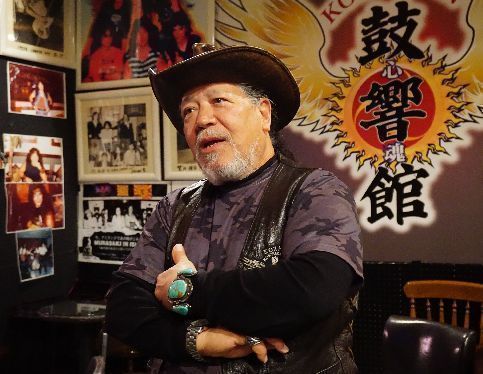
December 20, 2019 Ryukyu Shimpo
By Mikako Shimoji
Okinawa – The air was thick with the smell of smoke, and the people were filled with anger.
On December 20, 1970, 49 years ago, in an angry response to a U.S. military member causing a traffic accident as well as the response to the military police’s handling of the accident, Okinawans in Koza (modern day Okinawa City) set fire to cars in what is known as the “Koza Riot.”
Eiichi Miyanaga, 68, the drummer for the rock band “Murasaki” was a witness to the riot. At the time of the riot, Miyanaga was playing a concert for U.S. military personnel.
“I understood how both the Uchinanchu and U.S. military felt,” he said while reflecting on his conflicted feelings, and that even today his rock music resonates with his love for freedom and peace, without forgetting Okinawa’s post-war history and culture.
Miyanaga grew up in Koza, and started playing in bands after graduating from junior high school.
At the time of the riot he was 19 years old, working at a bar down the street from the gate to Kadena Air Base called “Astor House.”
Almost all of the patrons were U.S. military. It was at the height of the Vietnam War, so there were a large number of Americans his age from all over the United States gathered in Okinawa on their way to the battlefield.
“They would drown themselves in alcohol, and turned to music to let out emotions that had nowhere else to go.
When the day of their deployment would draw near, you could see the change in their eyes, even from the stage.
There were no soldiers that were looking forward to going to war.”
This is how Miyanaga remembered the figures of these young men who were being pressed into war against their will.
Then, in the early hours of December 20, 1970, there was an incident near the bar where his band had just finished playing for the soldiers.
While returning home, he came across the scene of a traffic accident caused by a U.S. soldier.
Tempers were flaring, and people were starting to rock the car, but he though, “It wouldn’t go much further than that,” and returned home.
It was late, and time to go to sleep. Then he heard a long “Bang!” and thinking that something major was going down, ran out of the house.
At Shimabukuro crossroads, Okinawan police and U.S. military police were facing off against the people who had gathered there.
Because of his job playing music at bars with mostly U.S. military patrons, he did not join in with the rioters.
Even so, “I could understand the anger from the Uchinanchu.”
While Miyanaga’s father was U.S. military and his mother was from Tokunoshima, he identifies as Uchinanchu.

Miyanaga (front row, center) with his bandmates around the time of the riot
His father was deployed to the Korean War, and his mother was very busy, so he was often looked after by a woman in the neighborhood from Naha.
The woman, who Miyanaga called “Auntie,” loved him as if he were her own child.
He had also experienced discriminatory treatment by U.S. soldiers.
“From the point of view of the white soldiers, I was colored. There were many times where I felt inferior.”
One of the cars burned in the riots belonged to one of his regular customers.
After the riot the soldier came to the bar disheartened, “They were beaten down. For something like this to happen in Okinawa…” Miyanaga reiterated his feelings at the time, “I understood how both the Uchinanchu and U.S. military felt.” After the riots, the U.S. military restricted leaving the base for U.S. military personnel and their families.
This put a strain on business that catered to U.S. soldiers.
Forty-nine years has passed since then.
The town of Koza passed through things like the reversion to Japan, and has been gradual decline.
Miyanaga worries about the post-war history and culture being forgotten.
“We cannot simply put a lid on history. History needs to be studied to pave the way for the future.”
Miyanaga reopened the Cannon Club in March this year on what used to be called BC Street (now Park Avenue), and continues to play rock music.
The club specializes in songs from the 60’s and 70’s, the songs that soldiers on their way to war would have requested at the time.
Many of the tunes sing of freedom, peace, and love. “Let’s bring the chorus of peace and love to the world from Koza.”
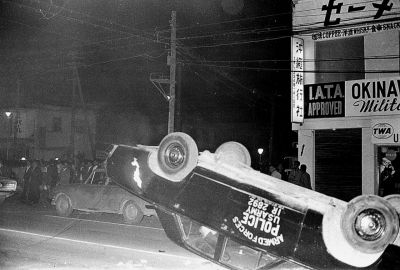
An American MP vehicle overturned by outraged Okinawans during the riot. December 20, 1970 on military road 24 (now National Route 330) in Koza
The Koza Riot
From the early hours of December 20, 1970 through the morning Okinawans overturned and set aflame cars belonging to U.S. military police and other U.S. military personnel on military roads 24 (now Japan National Route 330) and 20 (Kadena Air Base gate road, now Okinawa Route 20) in the city of Koza (now Okinawa City).
Anti-U.S. sentiments stemming from U.S. rule of Okinawa were already high from incidents such as a U.S. soldier being acquitted of charges after killing a housewife in Itoman in a hit-and-run earlier that year in September, and a protest in Misato (now Okinawa City) demanding the removal of poison gas.
(English translation by T&CT and Sam Grieb)
Go To Japanese
December 14, 2019 Ryukyu Shimpo
Does the Japanese government consider Okinawans as Japanese? Their extreme arrogance fill us with these doubts.
December 14 marks one year since the government started reclaiming land along the coast of Henoko, with the goal of building new base facilities in Henoko, Nago.
Only two-and-a-half months prior, Denny Tamaki defeated his opponent in the gubernatorial election by 80,000 votes as the base-opposing candidate.
To ignore the will of the people and start land reclamation is outrageously unbecoming of a democratic nation.
Even a year later, Okinawans continue to voice their opposition to base construction.
The height of this was the referendum vote in February.
After the government disregarded the will of the people in the gubernatorial election, which was seen as a majority repudiation of their policy, the referendum asked simply if people approved of or opposed land reclamation, and around 70% of voters responded in opposition.
It was a decisive resolution that came in the form of direct democracy. However, the government simply didn’t care.
After the referendum, in April there was the House of Representatives election for Okinawa’s third district, which includes Nago, and in July there was the House of Councillors election, and in both the candidate that opposed base construction won.
These results were similarly ignored. This was seen as a strange circumstance abroad, and should have been embarrassing to the government.
If Japan is truly a democratic nation, they would abandon construction based on the will of Okinawa, and immediately shutter MCAS Futenma.
However, the government don’t seem to consider their actions as out of the ordinary.
They continued with their administrative process as if they called a “take-back” on the discussions Okinawa was asking for, and forced through construction.
This led to a pair of lawsuits filed by the prefecture against the government.
In April, the Minister of Land, Infrastructure and Transportation handed down a decision that nullified Okinawa’s decision to revoke approval for land reclamation.
This led Okinawa to file a lawsuit against the government asserting that the actions by the government were illegal, however the court dismissed the case.
Okinawa appealed the decision. Meanwhile, in August there was also a case arguing that Okinawa’s decision to revoke permission for land reclamation was legal, while the Minister’s decision to nullify this was illegal.
Against the adversarial backdrop between the central government of Japan and Okinawa, the resolve of Okinawans in their opposition to base construction remained firm.
The base construction in Henoko was not an alleviation of the base burden as the government claimed, but seen as a solidification of that burden with the confirmation that they would be fortifying base capabilities with a new runway, ammunition depot, and port.
There is also a plan by the U.S. to deploying intermediate-range missiles, which are capable of carrying a nuclear payload, in Japanese bases starting with Okinawa, as the U.S., China, and Russia expand their nuclear capabilities in what appears to be the start of a new cold war era.
The missiles, along with the base facilities has raised the level of danger by putting us in the crosshairs of our “enemies.”
We must spark a wide-reaching public consensus for stopping the missile deployment and ending new base construction.
The land reclamation has completely disregarded the effects of the soft foundation. Also, neglecting the danger of MCAS Futenma is inexcusable.
According to Okinawa’s calculations, the construction costs could reach as high as 2.65 trillion yen.
This will take a huge chunk out of tax payer’s money, at the expense of things such as social security.
Every aspect of this is rife with doubt. All things considered, construction has only progressed a meager 1%. We cannot give up on our efforts to end construction at Henoko.
(English translation by T&CT and Sam Grieb)
Go To Japanese
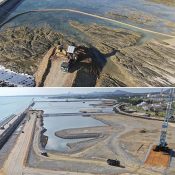
December 14, 2019 Ryukyu Shimpo
December 14 marks one year from the day that the government started dumping soil into the bay for the new base construction in Henoko, Nago.
In the past year, roughly 1% of the total soil required for the land reclamation project has been filled in. Going forward, it will be necessary to reinforce the weak seafloor on the Oura Bay side where land reclamation has yet to take place, and there is no doubt that the construction period will be extended and construction costs will rise.
Six years have passed since the national government got permission from the prefectural government to carry out the land reclamation, but the national government has yet to indicate a clear forecast for the expected construction costs and construction period.
Presently, soil is being dumped in two relatively shallow sections off the coast on the Henoko Bay side.
According to the Ministry of Defense, as of the end of November, the section (roughly 6.3 hectares) for which reclamation was started last December is 70% complete, and the adjacent section (roughly 33 hectares) for which reclamation was started in March of this year is 10% complete.
The area on the Oura Bay side, which is deeper, has yet to be filled in, and simple calculation based on the total amount of space to be reclaimed (roughly 20 million cubic meters) indicates that roughly 1% of the reclamation has been completed.
According to the Okinawa Defense Bureau, around 147.1 billion yen has already been injected into the relocation project.
Relative to the figure of (according to then-Minister of Defense Itsunori Onodera) “a minimum of” 350 billion yen set forth by the national government in 2014, around 40% of the budget has already been spent.
The prefectural government estimates, based on cases of reclamation works and ground improvement works in other prefectures, that the total construction cost, including seafloor reinforcement, will be 2.55 trillion yen.
In September 2019, the Ministry of Defense established a “Technical Investigation Committee” of experts to discuss reinforcement work on the weak seafloor.
Based on the committee’s deliberation, the national government expects to submit to the prefectural government an application for revised designs including the reinforcement work in the new year.
(English translation by T&CT and Sandi Aritza)
Go To Japanese

December 17, 2019 Ryukyu Shimpo
On December 16, South Island Spice Co., Ltd. (Naha City,) owned by Spice Works Inc. (Tokyo, CEO: Wataru Shimotono) launched the “Okinawa Kokusai Noren-gai” food hall complex inside the former Okinawa Mitsukoshi building in Makishi, Naha City.
The first floor and the first basement floor of the building are sectioned into four categorized zones, and the planned food hall complex will accommodate over 30 food vendors in total.
The project launched with the public soft opening of “Naha Market” zone on October 23, with seven vendors.
The new “Kokusai Street Yokocho” zone will add eleven more vendors to the first floor of the food hall complex, offering a total of 18 restaurants for visitors to choose from. (Yokocho, literally side street, usually refers to a drinking alley.)
The remaining two zones, the “Ryukyu Yokocho” zone, which will comprise branches of local restaurants acclaimed for its Okinawan cuisine, and the “Ramen Yokocho” zone, are slated to open on Februry 1, 2020, in the first basement level.
The first basement floor through the second floor of the former Mitsukoshi building previously housed the “Ryukyu Kingdom Market,” a gourmet theme park that went under.
Spice Works Inc. has since refurbished the complex in an effort to relaunch the business under a new model.
Inside the “Naha Market” zone, customers can pick up locally-sourced fresh meats and fish along with other Okinawan food items, or order freshly prepared meals. Visit Okinawa Steak to enjoy steaks (1,000 yen per 300 grams) and hamburgers, or treat yourself to A4 and A5 grade Wagyu beef at Mizutomi Seiniku-ten, where you can grill the meats at your table.
The “Kokusai Street Yokocho” is aptly marketed as “the yokocho offering delectable fare from all over Japan.”
It boasts a wide-ranging roster of restaurants, from Okinawan cuisine purveyor Okinawa SOULFOOD Jam to udon-noodle tavern Kagawa Ippuku; Pork Man, a restaurant specialized in Yanbaru pork and chicken; and Gyutan Iroha, a beef tongue restaurant.
Visit the “Kokusai Street Yokocho” between 11 a.m. and 4 a.m., and the “Naha Market” between 11 a.m. and midnight (10 a.m. – 11 p.m. for some restaurants.)
(English translation by T&CT and Monica Shingaki)
Go To Japanese
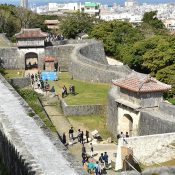
December 12, 2012 Ryukyu Shimpo
Shurijo Castle Park Management Center announced on December 11 that areas of the park affected by the fire will partially reopen to the public on December 12; namely the Kankaimon, Kyukeimon and Kofukumon gates, the Iri-no Azana (west azana watchtower) and the Zeni-kura (above ground cellar).
About 80% of the area that was available to the public prior to the fire will reopen once again.
Gov. Denny Tamaki made a statement on the reopening and urged locals and tourists to “Please visit Shuri Castle and explore the new self-guided Shurijo tours.”
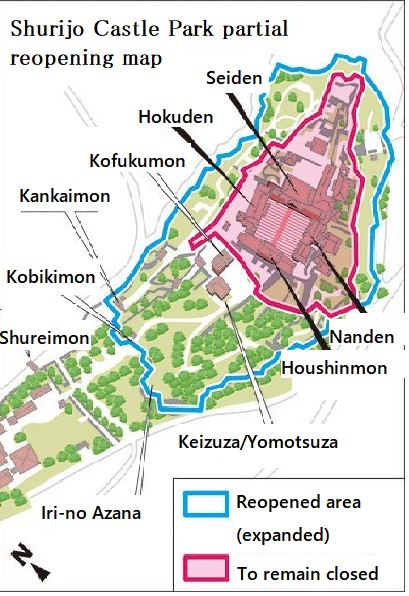
The Shichanu-una (lower courtyard) will also be accessible to the public, and the Hoshinmon gate which was affected by the fire will be available for viewing.
In an effort to draw more visitors, the Shurijo Castle Park Management Center has designed new self-guided “Shuri Castle reconstruction” tours, including a short route through the grounds and the “Shuri Machimai course.”
(English translation by T&CT and Monica Shingaki)
Go To Japanese

December 12, 2019 Ryukyu Shimpo
On December 10, the International Union for Conservation of Nature (IUCN) announced that the dugong that inhabit the waters around the Nansei Islands are critically endangered.
The IUCN is the world’s largest nature conservation organization with more than 200 government agencies among its members.
The announcement marks the first time that the IUCN has evaluated the conservation status of the dugong.
In the IUCN evaluation, the planned relocation of the U.S. Marine Corps Futenma Air Station with the construction of a new base in Oura Bay and Henoko, Nago is identified as a key concern.
According to the report, the damage to or loss of seagrass meadows there is likely to seriously impede the recovery of the dugong population.
This is a different stance from the Japanese government’s, which denies the impact of construction.
Critically endangered is the status used for species with the highest risk of becoming extinct.
The Japanese Ministry of the Environment classified the dugong as “Class 1A Endangered,” which also indicates the highest risk of extinction, in 2007. Now an international agency has confirmed this status.
Aside from the dugong, the IUCN categorizes 12 plant and animal species in Japan as critically endangered, including the Sakhalin taimen and the Okinawa sumire.
In March of this year, a dugong was found dead in the fishing port in Nakijin. This led Hideki Yoshikawa and his team at the Save the Dugong Campaign Center to petition the IUCN to evaluate the conservation status of the Nansei Islands dugong.
According to the IUCN report, there were approximately 30 dugongs living around the Nansei Islands in the 1970s but that number is now estimated at less than 10.
Since the construction of the new base in Henoko began, the two dugongs who had been seen in the waters around the construction site have disappeared. The Ministry of Defense denies any connection to construction.
“Since 2000, the IUCN has asked the Japanese government to protect the dugong through recommendations and resolutions,” Yoshikawa says. “But far from protecting them, we’ve reached a point where they have vanished from the oceans around Okinawa. We can’t even find signs of them feeding in the area.”
He continues, “Dugong used to live in the waters around Henoko. The government should at the very least stop construction for a few years and see if they come back.”
(English translation by T&CT and Ellen Huntley)
Go To Japanese
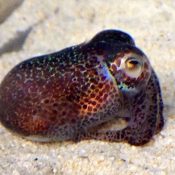
December 12, 2019 Ryukyu Shimpo
New species continue to be discovered in the ocean around Okinawa.
The sea anemone that has been raised for many years at Churaumi Aquarium was confirmed to be a new species.
A research team that includes members from the Okinawa Institute of Science and Technology Graduate University (OIST) have discovered a new species of squid, once again affirming the rich biodiversity of Okinawa’s oceans.
The research team, which comprises researchers from OIST and Australia were identifying the new species in the ocean around Okinawa, and the finding was printed in the December 11 issue of the academic journal Communications Biology.
The squid was named the Euprymna brenneri after Dr. Sydney Brenner, one of OIST’s founders and recipient of the Nobel Prize in Physiology or Medicine.
The Euprymna brenneri is a new species of bobtail squid, often nicknamed a “dumpling squid,” and measures about three centimeters in length.
The research team collected and analyzed living samples and eggs from the shallow waters near of Ishigaki Island, Kume Island, Miyagi Island in Uruma City, the Seragaki neighborhood of Onna, and Oura Bay in Nago.
Its specification as a new species is based on a unique characteristic wherein the suckers on the outside of its tentacles are larger than the others, and an exhaustive transcriptome analysis found differences in the DNA.
Dr. Brenner, who was a molecular geneticist and once quoted saying, “Cephalopods were the first intelligent animals on the planet,” was responsible for many of the researchers’ interest in cephalopods.
Daniel Rokshar, head of the OIST Molecular Genetics Unit and former student of Dr. Brenner, said, “It is an honor to name this new species after him as a small reminder of his importance in creating the field of molecular biology, and more broadly his efforts to foster the development of science in Okinawa, Singapore, and around the world.”
The results of the study is expected to provide a foothold into understanding the genetics, behavior, and origins of bobtail squids.
Hiroshima University Assistant Professor Gustavo Sanchez, the lead author of the study who had previously been at OIST, said, “We are compelled to explore why there is such a wide variety of species off the coast of Okinawa.”
(English translation by T&CT and Sam Grieb)
Go To Japanese
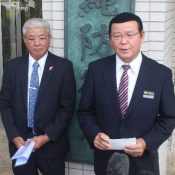
December 10, 2019 Ryukyu Shimpo
Kin – After an incident where three mortar flares were dropped on private property such as rice paddies in the Igei ward of Kin, Kin mayor Hajime Nakama and Igei Ward chief Hitoshi Yamazato visited Kazunori Tanaka, head of the Okinawa Defense Bureau (ODB), to voice their objections and for each to deliver written demands.
The town demanded that military training and exercises be permanently cancelled, and the ward demanded that firing range 4 inside of Camp Hansen be shut down, and that firing practice in ranges 3-5 be immediately stopped.
According to the town of Kin, ODB head Tanaka apologized, and said that he would, “Ask the U.S. military to explain the cause, and to strongly ask that such an occurrence be prevented from reoccurring.”
Both the representatives from Kin and Igei gave objections such as, “These types of accidents happening in a residential area is extremely abnormal, and we are greatly angered.
This can absolutely not be allowed.” In the written demands, the statement from Igei ward asked that an investigation and public announcement for the effects flare ignition powder has on people and farmland, and that the number of rounds fired from the mortar firing training ground on December 5 be made public.
The statement from the town of Kin asked for a full accounting of the incident as well as the policy for preventing reoccurrence be made public, and until the prevention policy is thoroughly carried out, that all live fire training and exercises in Camp Hansen be stopped.
The representatives from both the town and ward said that when they asked about the effects of the flare powder, the ODB answered that the U.S. military, “explained that there were no effects.”
The town has collected some of the soil as well as the remains of the flare, and will conduct their own investigation.
Mayor Nakama said, “The ODB acknowledged the danger of the incident, and will work quickly to provide an explanation as well as a plan to prevent reoccurrence.”
A special committee of the Kin town council for the investigation and policies for U.S. military base issues will compose a resolution and written statement in calling for the cessation of live-fire training in Camp Hansen.
The town council looks to vote on the measures December 10.
(English translation by T&CT and Sam Grieb)
Go To Japanese
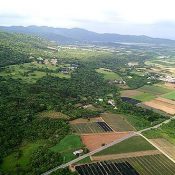
December 4, 2019 Ryukyu Shimpo
Thirty-two intellectuals, journalists and the like from outside Okinawa have decided to issue a collective statement in opposition to the deployment of Ground Self-Defense Forces in Miyako Island, Ishigaki Island and other outlying islands, and are currently gathering signatures.
The petition calling for signatures states, “The islands of Okinawa and Amami are being turned into a battlefield once more, and we ‘mainlander’ citizens must view this issue as one critical to our own survival; together we must rouse public opinion against militarization of this region.”
In a petition for signatures, former Self-Defense Force officer and military journalist Makoto Konishi explains that deployment of a missile unit on the Nansei Islands is underway, and criticizes this development, saying, “they are trying to turn it into a ‘missile battle testing grounds.’
” He points out that the construction of a U.S. military base in Henoko, Nago is a related development.
He describes Yonaguni Island and Ishigaki Island as “totally unarmed islands since the end of the war” and says, “military troops are unnecessary.”
The first wave of signatures will be gathered by the end of this year, and a second wave of signatures will be gathered on an ongoing basis.
People can sign on by email, mail or facsimile.
The mailing address is 1-12-10 Yamatocho, Nakano-ku, Tokyo. The email address is shakai@mail3.alpha-net.ne.jp. The facsimile number is 03-3310-6561.
(English translation by T&CT and Sandi Aritza)
Go To Japanese
December 6, 2019 Ryukyu Shimpo
Tetsu Nakamura, a physician and representative of Peshawar-kai in Afghanistan, was shot by an armed group and died. Peshawar-kai is a non-governmental organization working to aid Afghanistan’s recovery. Nakamura was a champion of nonviolence and worked endlessly to build a peaceful Afghanistan. It is a tragedy that he was gunned down before he could accomplish all he wanted.
Nakamura braved danger and made his home in a conflict zone for many years so that he could work on behalf of the Afghan people suffering due to war and poverty. He wanted to “go where no one else would go and do things that no one else would do.” This led him to not only provide medical services, but also to dig wells and irrigation channels to bring greenery back to the desert.
Nakamura aided Afghanistan’s efforts to become self-reliant. He believed that the Afghan people would escape poverty, discard their weapons, and a day of peace would arrive. His actions were based on the humanist ideal of extending a helping hand to the innocent, regardless of nationality, race, or religion. He showed us an example of humanitarian aid that Japan can be proud of.
He was a model of the peaceful Okinawa that we strive for. Peshawar-kai was the first recipient of the Okinawa Peace Prize, established by the prefecture in 2002. Okinawa was sacrificed in the Battle of Okinawa and still houses expansive military bases postwar. To Nakamura, this struggle and contradiction represented Asia in microcosm. The people of Okinawa resonate with him as “servants of nonviolence and selflessness.”
At the awards ceremony, Nakamura said, “Having our activities recognized by the people of Okinawa as contributing to peace through nonviolence has a special meaning.” Thinking of the reasons the award was established, his group was an appropriate recipient. Okinawans are proud to be able to celebrate his work.
In October of this year, Nakamura was granted honorary citizenship by the government of Afghanistan as a great hero. He gave his all for Afghanistan and was widely respected. Why did such a man become the target of an attack? The senseless violence is infuriating.
At the same time, there is concern that the Japanese government’s tendency to follow along with America’s use of force has threatened the safety of Japanese people in areas of conflict overseas.
After the September 11 Attacks in 2001, the United States retaliated by initiating airstrikes against the Taliban headquartered in Afghanistan. Japan declared its support. When the United States invaded Iraq in 2004, Japan Ground Self Defense Forces were deployed to southern Samawah.
With Japan’s enactment of security-related legislation in 2015, it became possible to exercise collective self-defense. In response, Nakamura warned, “We are protected and able to continue our work because, unlike other countries, Japan is believed to be a country that will not wage war.”
While movements such as those to allow weapons exports and revise Article 9 grow stronger, it is increasingly difficult to claim that Japan is a neutral country. An additional example of going along with the United States militarily is the construction of the new base at Henoko.
I want to continue Nakamura’s legacy of practicing nonviolence and to understand the importance of the pacifism proclaimed in the constitution. I, along with every Okinawan, honor the activities of Peshawar-kai, and offer our prayers that Tetsu Nakamura will rest in peace.
(English translation by T&CT and Ellen Huntley)
Go to Japanese
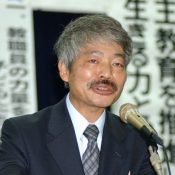
December 4, 2019 Ryukyu Shimpo
By Haruko Tabuki
Japanese physician Tetsu Nakamura was recently shot and killed in Afghanistan.
The recipient of the inaugural Okinawa Peace Prize as the Peshawar-kai representative for Afghanistan, Nakamura had deep ties with Okinawa.
He even promised to name a newly established clinic in Afghanistan “Okinawa Peace Clinic” and said, “I hope to convey the Okinawans’ [desire for peace] on their behalf, by creating a ‘peaceful base’ in a war-ridden region.”
Here are some of the late doctor’s Okinawa-related quotes.
“Okinawa calls for peace on behalf of the silenced” -In 2002, at the Okinawa Peace Prize award ceremony.
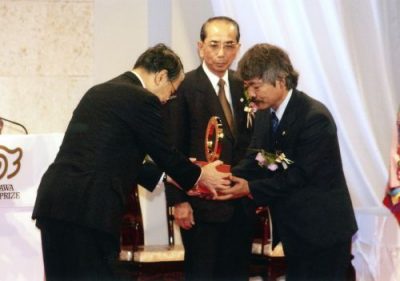
Dr. Nakamura received the inaugural Okinawa Peace Prize in 2002, and gave an acceptance speech at the award ceremony on August 30:
It is particularly meaningful to me that our efforts were recognized by the Okinawan people as ‘contributing to peace by non-violent means.’
For those of us working in Afghanistan, there is a striking contrast between our work far away in Afghanistan, and Okinawa, which hosts the U.S. military bases that deploy troops to Afghanistan.
In Afghanistan, anyone who speaks out for peace is met with violent punishments, and the Afghani people are effectively silenced.
As a Japanese national working in Afghanistan, it gives us pride that Okinawa, an ‘island of military bases’, is calling for peace on behalf of the silenced Afghan people.
The contradictions found in Okinawa are Japan’s contradictions condensed. Persevering without showing support to the U.S. military is impossible, and that is the reality in other places of the world as well.
I want to convey that the hardships endured by Okinawa as a U.S. military host epitomizes the situation seen in all of Asia.
The Okinawa Peace Prize disproves the modern world, in which honor is easily lost.
While we acknowledge that there is controversy surrounding peace prizes, we are certain that ‘peace’ is desired by all Okinawans, regardless of political status.
(From the Ryukyu Shimpo, August 31, 2002)
“The burden should be kicked back to Japan.” -At the Okinawa Peace Memorial Symposium
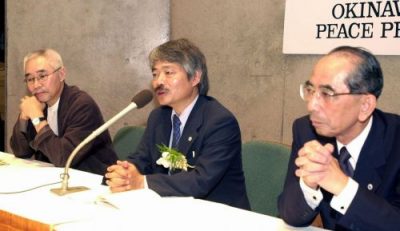
Dr. Nakamura commented on the U.S. military presence in Asia after the Okinawa Peace Prize Memorial Symposium: “Persevering without U.S. military bases is impossible, and that’s not unique to Okinawa, it’s applicable to Japan as a whole. Instead of Okinawans solely paying the price for it, the burden should be kicked back to Japan. Consider the reality that Afghanistan would perish without a pro-American administration. This issue is not unique to Okinawa, it’s seen widely in Asia.”
Regarding the post-9/11 airstrikes in the Middle East and Japan’s deployment of its self-defense forces, Nakamura commented, “Most of us were guided by this attitude that anyone who commits such heinous acts deserved to be punished.
Journalism possibly played a role in that as well. At the root of this narrative was that Japan wouldn’t have survived not taking a pro-American stance, which was used to justify violence. It’s unforgivable, and clearly unconstitutional.”
“A ‘peaceful base’ in a war-torn region.” -In 2003, when the Okinawa Peace Clinic opened its doors.

The Augudy 31, 2002 Ryukyu Shimpo article reporting on the “Okinawa Peace Clinic.”
Dr. Nakamura opened a clinic in the mountainous regions of Afghanistan using a portion of the Okinawa Peace Prize award money, and named it Okinawa Peace Clinic.
According to the August 31, 2002 Ryukyu Shimpo article, the new clinic was opened in the Sinzai Village located in the valleys of Dara-I-Pech in the Kunar Province of Afghanistan.
The clinic was the only healthcare facility in the area. Dr. Nakamura explained the urgency of the situation in Afghanistan and said, “Based on a tip of Al Qaeda presence in the area, the U.S. military began gathering.”
He then expressed his passion for the clinic and said, “[A clinic] is especially important in a war-torn area. It’s a silent kind of force, a solution that does not rely on violence, or use force against force. [..] I hope to convey the Okinawans’ [desire for peace] on their behalf, by creating a ‘peaceful base’ in a war-ridden region.”
“I want to underscore the importance of peace by telling our story.” -In 2017.
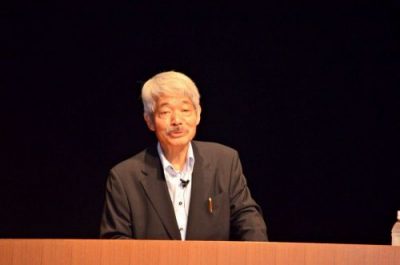
Dr. Tetsu Nakamura taking the podium at a conference in Urasoe City, in 2017.
In 2017, the late doctor spoke at a conference held by the Okinawa Josei no Tsubasa no Kai (literally: the wings of women association.)
There, Nakamura commented on the latest world affairs: “Currently, each nation is working to advance its own interests in non-peaceful ways.
The fact is, we are in a state of confusion. I want to underscore the importance of peace by telling our story.”
(English translation by T&CT and Monica Shingaki)
Go To Japanese
















 Webcam(Kokusai Street)
Webcam(Kokusai Street)


